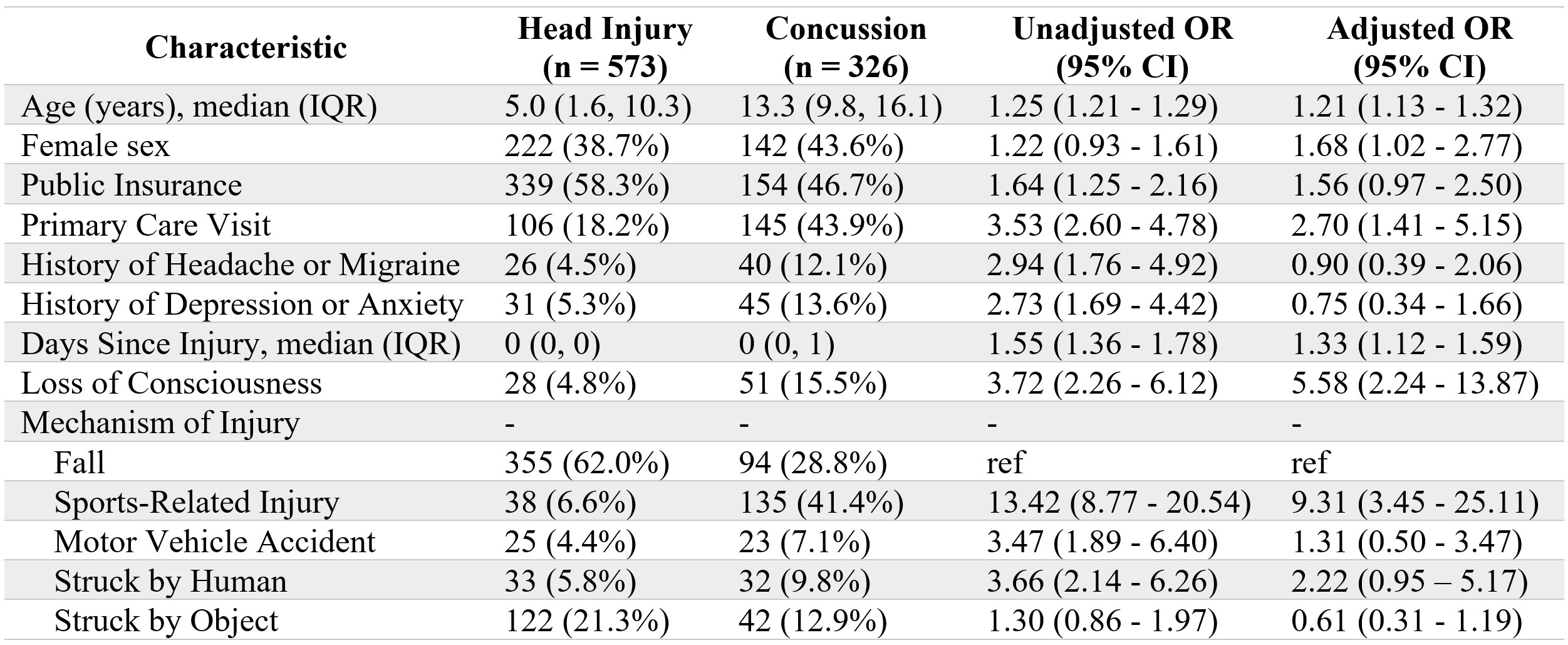Health Services Research
Session: Health Services Research 4: Population Monitoring and Management
240 - Concussion Versus Unspecified Head Injuries in Children: Presenting Characteristics and Post-Injury Healthcare Utilization
Sunday, May 5, 2024
3:30 PM - 6:00 PM ET
Poster Number: 240
Publication Number: 240.1850
Publication Number: 240.1850

Erin J. Meyer, MD (he/him/his)
Assitant Professor of Pediatrics
UMass Memorial Children's Medical Center
Natick, Massachusetts, United States
Presenting Author(s)
Background: Only a fraction of children who seek medical care for an acute head injury receive a diagnosis of concussion, which carries important implications for return-to-activity recommendations and follow-up care. The distinguishing characteristics and post-injury healthcare utilization patterns of these two patient populations have not been previously explored.
Objective: To compare the presenting demographic, clinical, and injury-level characteristics of children who are diagnosed with concussion versus unspecified head injury, and to examine differences in post-injury healthcare utilization patterns.
Design/Methods: We performed a retrospective cohort study using administrative data from a large quaternary care pediatric center and network of associated primary care practices. Patients included were 0-17 years old and diagnosed with an acute head injury or concussion in the emergency department or a primary care practice. We utilized multivariable logistic regression to identify predictors of concussion diagnosis versus unspecified head injury. We measured the number of daily healthcare visits six months before and after the acute visit. We used interrupted time series analyses to compare healthcare utilization rates in the baseline ‘pre-injury period’, the ‘immediate post-injury period’ (first 28 days after injury), and ‘delayed post-injury period’ (beyond 28 days).
Results: We included 573 head injuries and 326 concussion visits. Presenting demographic, clinical, and injury-level characteristics of these two patient populations with calculated unadjusted and adjusted odds ratios for concussion diagnosis are presented in Table 1. Factors associated with concussion diagnosis included older age, female gender, initial care in the primary care office, seeking care later after injury, loss of consciousness, and sports-related injury. Healthcare utilization during the immediate post-injury period increased significantly after the acute visit for both concussions and unspecified head injuries, but this peak in utilization rate was significantly higher for patients diagnosed with concussion (Figure 1).
Conclusion(s): Demographic, clinical and injury-level characteristics may predict concussion diagnosis after acute head injury. Receiving a concussion diagnosis is associated with a more pronounced peak in healthcare utilization rate during the first 28 days after injury. Clinicians should understand predictors and implications of concussion diagnosis when caring for children after a minor head injury.

.jpg)
